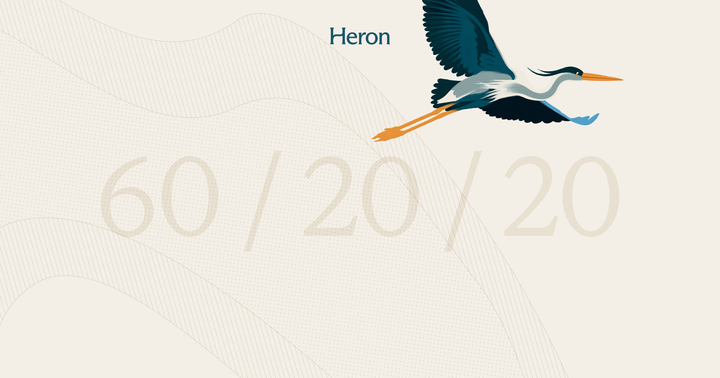What are the Alternatives to Investing in Bonds?
Investors look to bonds for consistency and as a hedge against stocks. With bonds and stocks growing more correlated, what alternatives are there for investors looking to diversify away from the stock market?

Investors looking to diversify away from stocks have traditionally chosen bonds as instruments of perceived safety and security within their portfolio. Typically, as stocks would drop in value, bonds would rise, making them an ostensibly strong hedge against a falling stock market.[1]
But those days appear to be over.
In 2022, the S&P 500 plummeted 19%. The NASDAQ fared even worse, with a massive 33% drop.[2] And U.S. bonds, in contrast to historical trends, experienced their worst year ever.[3] Intermediate-term Treasury bonds lost 10.6% for the year, and long-dated (30-year) Treasury bonds plunged 39%–the most since 1754!
So with stocks and bonds now positively correlated (rising and falling in tandem), what is an investor looking for diversification supposed to do?
In this article, we’ll explain how bond investment works, share some alternatives to bonds, and explain the differences between private credit and bond investment.
Key Highlights
- Bonds are investments in the debt of a government or corporate entity. Investors can hold bonds to maturity while collecting yield along the way, or sell them on the secondary market.
- Throughout the term of a bond investment, investors receive a coupon payment (yield), and when the bond matures, investors are repaid their initial investment in full (unless the borrower defaults)
- Real estate can offer the same consistent income as bonds, but performance is also subject to interest rate changes as well as other factors. Private credit is typically not as interest rate-sensitive as real estate, and like bonds, offers a way to invest in debt and receive a regular income.
What are Bonds?
Bonds are investments that represent the debt issued by a government or company. They can be purchased directly by the issuer, or on the secondary market. They can also be purchased individually, or as part of a pooled bond fund or exchange-traded fund.
When investors purchase a bond at its initial issuance, they are usually entitled to a “coupon”–a regular payment on the value of the initial loan. This is also known as the yield. And when the bond “matures,” investors are repaid their initial capital investment in full–unless the borrower defaults, in which case investors may receive a portion of their investment back (or none at all).
Investors can also buy and sell bonds on the secondary markets at any time during their terms, but prices on these markets tend to fluctuate. Higher interest rates, for example, tend to make the coupon on existing bonds seem less attractive. If a bond is yielding 5% per year, and the interest rate is 2%, the bond is yielding 3% over the rate of inflation. But if interest rates spike to 7%, suddenly that same bond is losing 2% per year to inflation.
That is why bond prices are inversely correlated with interest rates. As interest rates rise, bond prices fall, because bonds become less valuable relative to safer investments like savings accounts, as interest rates increase.[4]
Of course, if investors plan on holding a bond to maturity, they likely won’t care what the price of the bond is, as they are looking to be repaid their capital investment in full. But this implies locking up their capital for the entire duration of the bond, and not selling it on the secondary market. This also assumes the bond issuer doesn’t default–at which point, the bondholder may lose some or all of the principal investment.
For these reasons, investors often look to sell their bonds before the term is up, hence the (sometimes extreme) volatility in bond prices. Given that investors typically invest in bonds for their safety and security relative to stocks, bond price volatility has many investors looking elsewhere in search of stability within their portfolio.
What are the Alternatives to Bonds?
Few investments share the key features of bonds: coupon-like returns and relative stability in the underlying asset. Two very prominent alternatives to bonds are real estate and private credit.
Let’s see how the two measure up:
Real Estate
Like bonds, real estate can offer regular income from rent. Investors also take ownership of a physical asset (the building or land itself), and rising property prices can help one’s portfolio keep pace with inflation, depending on the circumstances.
But like bonds, the real-estate market is typically inversely correlated with interest rates. When rates rise, the costs associated with purchasing property increases. Demand consequently decreases, and property prices tend to fall accordingly. Conversely, low rates will lower purchasing costs, increasing both demand and real estate prices.
Real estate prices also tend to fluctuate more so than bonds. Real estate is also illiquid–sales take time, making it hard to recoup one’s investment quickly.
In short, real estate can offer the consistent income of bonds, yet price volatility and the asset’s illiquid nature typically make it a less stable investment option.
Private Credit
Private credit is the alternative investment most analogous to bonds–both are investments in debt, and both offer consistent income streams. In fact, private credit is almost like a specialized type of bond.
Yet there are a few key differences. For one thing, private credit offers the possibility of much higher returns than bonds (many private credit investments offer the possibility of average annualized yields in the double digits, depending on the specific type of investment). And private credit investments are often less volatile than bonds–the median private credit fund manager has thus far not experienced a down year,[5] whereas 2022 was the worst-ever year for U.S. bonds.[6]
So what’s the catch?
Well, there are a few, actually: First of all, you typically don't get higher returns without a higher degree of risk, and private credit is no exception. The risk premium for private credit investments is higher than that of most bonds.
Additionally, private credit isn’t traded on the public market, making it less accessible to most investors. And private credit investments often have fixed terms and cannot typically be resold in the secondary market the way bonds can. So there are accessibility and liquidity issues with private credit. Fortunately, digital platforms are addressing these concerns.
Investing in Private Credit with Heron Finance
Digital platforms like Heron Finance are expanding access to the private credit market. Traditionally reserved for institutions and high net worth individuals, accredited investors can now gain exposure to this booming asset class. And private credit has been booming lately. 2023 experienced record-breaking fundraises and deals involving prominent private credit funds managed by firms like BlackRock and Goldman Sachs.[7]
Heron Finance is available to accredited investors only, but the platform makes the accreditation verification process easy. Here is a brief article which outlines the 4-step process for verifying your accreditation status through Heron Finance.
If you are an accredited investor and you’d like to start investing in private credit, simply click the button below to begin setting up your Heron Finance account.




